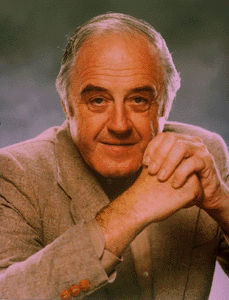Browse "People"
-
Article
Raymond Burr
Raymond Burr's more memorable roles in higher profile films included the lawyer in A Place in the Sun (1951) with Montgomery Clift and Elizabeth Taylor, and the murderer threatening Grace Kelly and Jimmy Stewart in Alfred Hitchcock's classic suspense thriller Rear Window (1954).
"https://d2ttikhf7xbzbs.cloudfront.net/media/media/580b3d2d-536b-4271-8e96-a51c91873cf1.jpg" // resources/views/front/categories/view.blade.php
https://d2ttikhf7xbzbs.cloudfront.net/media/media/580b3d2d-536b-4271-8e96-a51c91873cf1.jpg
-
Macleans
Raymond Chan (Profile)
This article was originally published in Maclean’s magazine on January 30, 1995. Partner content is not updated.
"https://d2ttikhf7xbzbs.cloudfront.net/media/media/7da8e42f-e44b-4a4e-bc62-3c0537eeba51.jpg" // resources/views/front/categories/view.blade.php
https://d2ttikhf7xbzbs.cloudfront.net/media/media/7da8e42f-e44b-4a4e-bc62-3c0537eeba51.jpg
-
Article
Raymond Collishaw
Raymond Collishaw, CB, DSO & Bar, OBE, DSC, DFC, fighter pilot, senior Royal Air Force (RAF) commander, businessman (born 22 November 1893 in Nanaimo, BC; died 28 September 1976 in West Vancouver, BC). Collishaw was one of the great aces of the First World War and an important RAF commander in the North African theatre during the Second World War.
"https://d2ttikhf7xbzbs.cloudfront.net/media/media/07c16822-1de3-4453-8fde-aa2171cd45ef.jpg" // resources/views/front/categories/view.blade.php
https://d2ttikhf7xbzbs.cloudfront.net/media/media/07c16822-1de3-4453-8fde-aa2171cd45ef.jpg
-
Article
Raymond Daveluy
Daveluy was a founding member of the Mélodistes indépendants (1995), an association of composers and performers that promotes contemporary music accessible to a wider public than is traditionally the case with respect to modern works.
"https://d2ttikhf7xbzbs.cloudfront.net/media/media/e7fa5889-cb8d-47f3-a36a-ada7dc2be161.jpg" // resources/views/front/categories/view.blade.php
https://d2ttikhf7xbzbs.cloudfront.net/media/media/e7fa5889-cb8d-47f3-a36a-ada7dc2be161.jpg
-
Article
Raymond Daveluy
(Joseph Eugène) Raymond (-Marie) Daveluy, organist, composer, administrator, educator (born 23 December 1926 in Victoriaville, QC; died 1 September 2016 in Montréal, QC). In 1937 he began studying music with his father, Lucien Daveluy, an organist and bandmaster in Victoriaville.
"https://development.thecanadianencyclopedia.ca/images/tce_placeholder.jpg?v=e9dca980c9bdb3aa11e832e7ea94f5d9" // resources/views/front/categories/view.blade.php
https://development.thecanadianencyclopedia.ca/images/tce_placeholder.jpg?v=e9dca980c9bdb3aa11e832e7ea94f5d9
-
Article
Raymond Dessaints
Raymond Dessaints. Violinist, conductor, teacher, b Quebec City 21 Apr 1932; premier prix violin (CMQ) 1952. His main studies were with Calvin Sieb at the CMQ.
"https://development.thecanadianencyclopedia.ca/images/tce_placeholder.jpg?v=e9dca980c9bdb3aa11e832e7ea94f5d9" // resources/views/front/categories/view.blade.php
https://development.thecanadianencyclopedia.ca/images/tce_placeholder.jpg?v=e9dca980c9bdb3aa11e832e7ea94f5d9
-
Article
Raymond Dudley
Raymond Dudley. Pianist, teacher, b Bowmanville, Ont, 20 Jun 1931, d Columbia, South Carolina, 16 Dec 2004; ARCT 1947, LRCT 1949, Artist Diploma (RCMT) 1952.
"https://development.thecanadianencyclopedia.ca/images/tce_placeholder.jpg?v=e9dca980c9bdb3aa11e832e7ea94f5d9" // resources/views/front/categories/view.blade.php
https://development.thecanadianencyclopedia.ca/images/tce_placeholder.jpg?v=e9dca980c9bdb3aa11e832e7ea94f5d9
-
Article
Raymond Gervais
Raymond Gervais, avant-garde conceptual artist (born in 1946 in Montréal, Québec) creates multidisciplinary and multimedia performances and installations.
"https://development.thecanadianencyclopedia.ca/images/tce_placeholder.jpg?v=e9dca980c9bdb3aa11e832e7ea94f5d9" // resources/views/front/categories/view.blade.php
https://development.thecanadianencyclopedia.ca/images/tce_placeholder.jpg?v=e9dca980c9bdb3aa11e832e7ea94f5d9
-
Article
Raymond Gravel
Raymond Gravel, priest, chaplain, theologian and parliamentarian (born 4 November 1952 in Saint-Damien-de-Brandon, QC; died 11 August 2014 in Joliette, QC).
"https://d2ttikhf7xbzbs.cloudfront.net/media/media/a5a3fb35-11fe-487d-bc8f-d04eee16f753.jpg" // resources/views/front/categories/view.blade.php
https://d2ttikhf7xbzbs.cloudfront.net/media/media/a5a3fb35-11fe-487d-bc8f-d04eee16f753.jpg
-
Article
Raymond Hart Massey
Raymond Hart Massey, actor (b at Toronto 30 Aug 1896; d at Los Angeles, Calif 29 July 1983), brother of Vincent MASSEY. His distinctive voice and craggy good looks made him indelibly associated with the role of Abraham Lincoln both on stage and in film.
"https://development.thecanadianencyclopedia.ca/images/tce_placeholder.jpg?v=e9dca980c9bdb3aa11e832e7ea94f5d9" // resources/views/front/categories/view.blade.php
https://development.thecanadianencyclopedia.ca/images/tce_placeholder.jpg?v=e9dca980c9bdb3aa11e832e7ea94f5d9
-
Article
Raymond Holmes Souster
Raymond Holmes Souster, poet and editor (born at Toronto 15 Jan 1921, died there 19 Oct 2012). Souster spent his entire life in his native city except for wartime service in the RCAF (See MILITARY AVIATION). In civilian life he was employed by the CANADIAN IMPERIAL BANK OF COMMERCE.
"https://development.thecanadianencyclopedia.ca/images/tce_placeholder.jpg?v=e9dca980c9bdb3aa11e832e7ea94f5d9" // resources/views/front/categories/view.blade.php
https://development.thecanadianencyclopedia.ca/images/tce_placeholder.jpg?v=e9dca980c9bdb3aa11e832e7ea94f5d9
-
Article
Raymond Jean Bourque
Raymond Bourque, hockey player (b at Montréal, Qué, 28 Dec 1960). Raymond Bourque is one of the NATIONAL HOCKEY LEAGUE's best-ever defensemen, holding the record for the most points, goals and assists for a defenseman in the league.
"https://development.thecanadianencyclopedia.ca/images/tce_placeholder.jpg?v=e9dca980c9bdb3aa11e832e7ea94f5d9" // resources/views/front/categories/view.blade.php
https://development.thecanadianencyclopedia.ca/images/tce_placeholder.jpg?v=e9dca980c9bdb3aa11e832e7ea94f5d9
-
Article
Raymond Klibansky
Raymond Klibansky, philosopher and historian (b at Paris 15 Oct 1905; d Montreal 5 Aug 2005). He studied in Kiel, Hamburg, and Heidelberg, where he received a doctorate in philosophy in 1928, and eventually, completed an MA at Oxford.
"https://development.thecanadianencyclopedia.ca/images/tce_placeholder.jpg?v=e9dca980c9bdb3aa11e832e7ea94f5d9" // resources/views/front/categories/view.blade.php
https://development.thecanadianencyclopedia.ca/images/tce_placeholder.jpg?v=e9dca980c9bdb3aa11e832e7ea94f5d9
-
Article
Raymond Knister
Raymond Knister, writer (b at Ruscom, Ont 27 May 1899; d at Stoney Pt, Ont 29 Aug 1932). He attended Victoria College, University of Toronto, briefly and took courses at Iowa State University, Iowa City (1923-24).
"https://development.thecanadianencyclopedia.ca/images/tce_placeholder.jpg?v=e9dca980c9bdb3aa11e832e7ea94f5d9" // resources/views/front/categories/view.blade.php
https://development.thecanadianencyclopedia.ca/images/tce_placeholder.jpg?v=e9dca980c9bdb3aa11e832e7ea94f5d9
-
Article
Raymond Lévesque
Lévesque returned to Montréal in 1959 and cofounded the group Les Bozos with other chansonniers. He also became actively involved in the Québec separatist movement.
"https://d2ttikhf7xbzbs.cloudfront.net/media/media/2904ae38-63a6-4ca6-8749-fefc718b712e.jpg" // resources/views/front/categories/view.blade.php
https://d2ttikhf7xbzbs.cloudfront.net/media/media/2904ae38-63a6-4ca6-8749-fefc718b712e.jpg
